VIDEO
Products
Streaming
Deliver flawless live video to any audience, anywhere
OTT Apps
Launch and monetize your own branded TV & mobile apps
Spark Encoder
Tap into hardware encoding that's compact and powerful
Broadcaster App
Go live straight from your phone or tablet with studio-quality control
Features
BoxCast Flow
Ensures smooth playback even on shaky networks
Sharing
Instantly clip, share, and amplify your broadcasts
Producer
Create professional streams right from your browser
Third-Party Encoders
Use the gear you love with our support of RTMP and SRT
AUDIO
RemoteMix
Mix live audio remotely from anywhere in the world
Compatible Mixers
Connect your favorite digital mixer to RemoteMix
INDUSTRIES
House of Worship
Reach and engage your congregation wherever they worship
Sports
Stream games with professional quality for fans everywhere
Local Government
Bring transparency and connection to your community broadcasts
Business
Power your corporate events, webinars, and live streams
LEARN
Blog
Insights, trends, and tips for the audio/video community
Tech Tips
Quick how-tos and deep dives on the latest streaming technology
Guides
Essential tips and expert strategies to expand your reach
Newsletter
Stay up to date with product news, best practices, and more
Podcast
Hear stories and strategies from our customers and experts
DISCOVER
Customer Stories
Explore real-world success stories to inspire your organization
Events
Join us at an upcoming conference and meet with our team
Webinars
Get all the details and register for our next live webinar
About Us
Discover our company's mission, values, and team story
Live Streaming Software, Audio
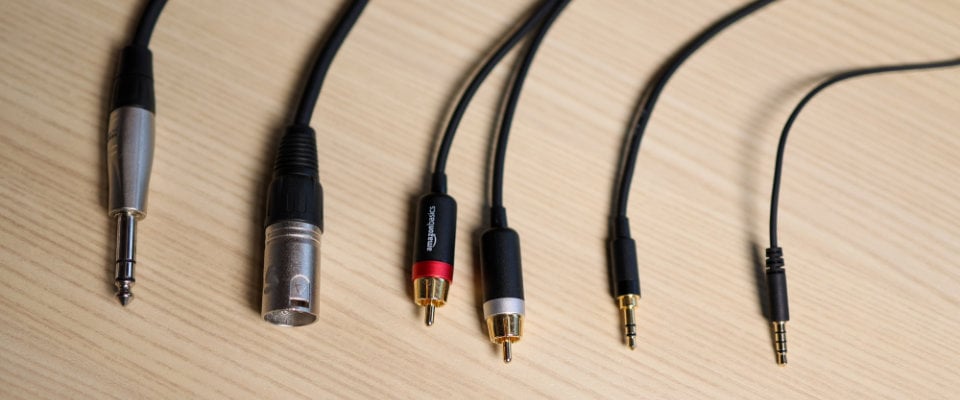
BoxCast Team • March 10, 2022
Anyone who’s dipped their toes into the waters of live audio production knows that various little things have a huge impact on sound quality. For example, did you know every cable you use in your production setup has the potential to add unwanted noise to your audio feed? It’s important to understand audio cables (and how they’re made) to properly assess which one is right for the job.
Having audio issues? You might want to check out How To Fix Audio Issues On Your Live Stream first.
In this post, we’ll discuss the types of signals different cables carry. As you’ll soon learn, they can either be balanced or unbalanced. Watch this quick video that explains what that means:
Video: Balanced vs. Unbalanced Cables Explained
Major Difference Between Balanced + Unbalanced Audio
Balanced vs. Unbalanced Cables: Which One Should You Use?
A Common Misconception about Cables
FAQs
Further Reading
One of the major differences between these cables is that balanced audio has less risk for unwanted noise, while unbalanced audio can pick up humming or buzzing sounds in certain environments.
In general, balanced audio will give you a better, stronger audio signal without any extraneous noises. Unbalanced audio, on the other hand, is susceptible to picking up noise and interference over longer distances. The ground wire in an unbalanced audio cable can pick up unwanted noise as the audio signal travels through it. This susceptibility (or lack thereof) to interference is due to how the cable is made.
To understand that, let's dive deeper into how balanced and unbalanced audio works.
An audio cable carrying an unbalanced signal uses two wires: a signal and a ground.
The signal wire, as the name suggests, carries the audio signal to where it needs to go. The ground wire acts as a reference point for the signal. However, the ground wire itself also acts like an antenna, picking up unwanted noise along the way.
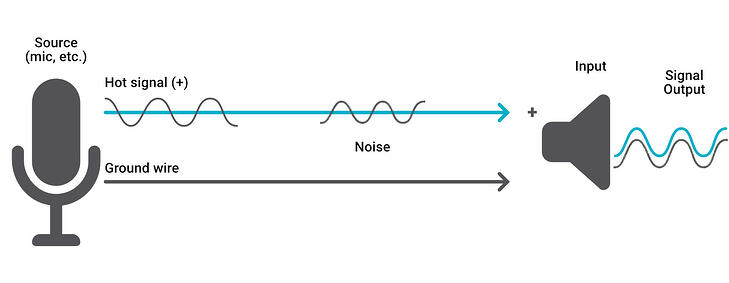
Because unbalanced cables can pick up noise as a signal is sent along the cable, they’re best used for short distances, like connecting a guitar to a nearby amp. This minimizes the risk of unwanted noise.
Noise can come from a variety of electrical and radio interferences, but it most commonly comes from power cables, which can create a humming sound if they're near cables carrying unbalanced audio. Older, non-LED stage lighting (such as spotlights or dimmers) can also add signal interference.
The best technique to reduce unbalanced cable noise is to be careful with cable placement. A single perpendicular crossing of power and audio cables is much better than a parallel run. If parallel can't be avoided, leave as much space as possible between audio and power cables.
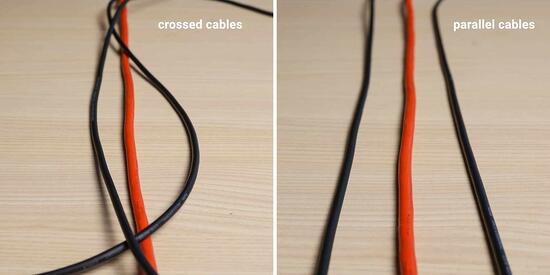
RCA audio cables are unbalanced analog audio connections that send stereo audio over a right channel (red tip) and left channel (white or black tip). An RCA unbalanced signal typically shouldn't run over 25 feet.
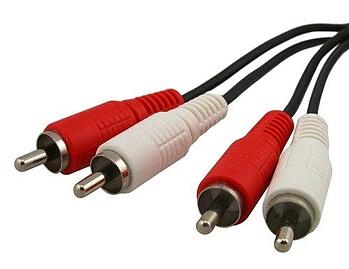
Quarter-inch TS (tip, sleeve) cables are generally used for unbalanced signals. These are most commonly used with electric guitars, which often output to an amplifier. The diagram below shows how the cable works.
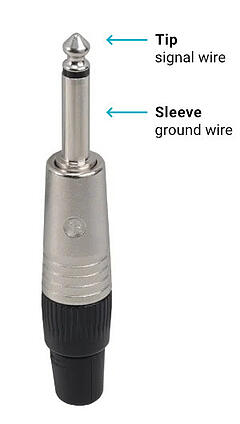
The structure of a balanced audio cable is similar to an unbalanced cable — with one addition. A balanced audio cable has a ground wire, but it also carries two copies of the same incoming audio signal, sometimes referred to as a hot (positive) and cold (negative) signal.
What’s the difference between the hot and cold signals?
The two signals are reversed in polarity, so as they travel down the cable, they cancel each other out. (Think of how adding positive and negative numbers of equal value amounts to zero.)
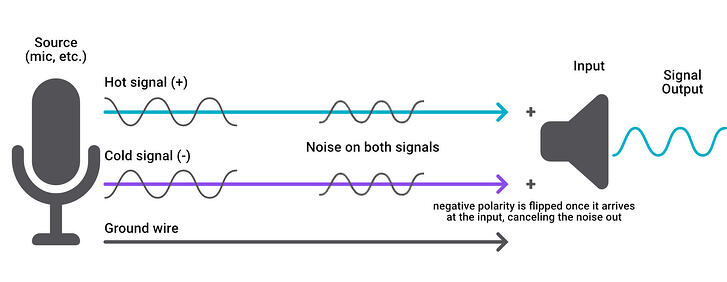
Once the hot and cold signal get to the other end of the cable, however, the polarity of the cold signal is flipped, so both signals are in phase, and perfectly in sync.
Here’s the cool part: If the cable picks up noise along the way, the noise added to both of those cables is not reversed in polarity. So when the cold signal flips in polarity to match the polarity of the hot signal, the noise carried along the cold signal cancels out with noise in the hot signal. This canceling out process is called common-mode rejection, with the noise being the common signal between the two.
Because balanced signals send two in-phase signals, they’re also louder (roughly 6–10 dB) than what unbalanced signals can provide.
XLR cables can send balanced audio signals up to 200 feet. As you see in the diagram below, there are three male pins inside the connector: the groundwire, the hot signal, and the cold signal.
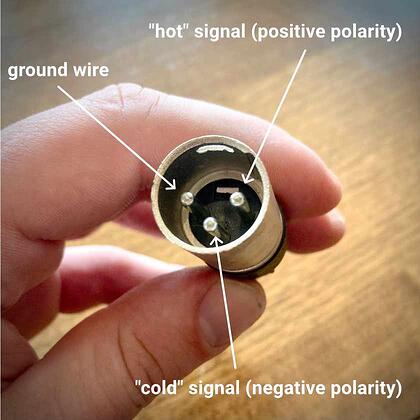
A quarter-inch TRS cable is another balanced professional audio cable. TRS stands for tip, ring, sleeve, and can be used to send either mono (balanced) or stereo (unbalanced) signals. The diagram below shows how each one plays a role in the structure of a balanced signal.
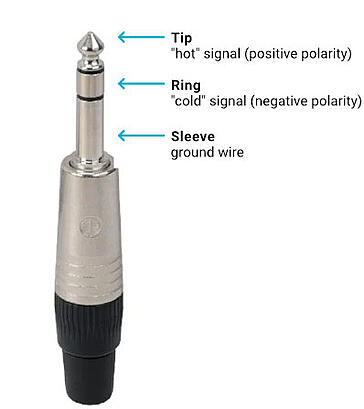
"Unbalanced" has a negative connotation, and many users may interpret that to mean that they should avoid unbalanced cables altogether. They're shorter, restricting what you can do with them, and they can muddle your audio with distortion.
So why does anyone still use unbalanced cables?
The truth is that distortion really isn't much of an issue at less than 10 feet. For anyone capturing their audio from a studio or recording booth, the distance traveled by your cable is likely short enough to not pick up distortion. In fact, unbalanced cables at close ranges can have even stronger signals than balanced cables.
To further sweeten the deal, unbalanced cables typically cost far less than their balanced counterparts. Along with the increased price of balanced cables owed to their more complicated design, they also require supporting hardware that can make use of the balance function.
Unbalanced cables are favored by lower-budget broadcasters, and due to this clarity and the simplicity of the cable design, many recording studios favor unbalanced cords that reach up to 10 feet.
Balanced output and cable setups may be seen as the industry gold standard in some circles, but it ultimately comes down to your specific needs and resources.
If you're looking to connect a microphone from center stage, your cord will likely be long, surrounded by other electronic equipment, and you'll hear every decibel of distortion when the presenter speaks.
If you're setting up for a rock concert, however, a guitar is played loudly enough to drown out distortion — even when using a longer, unbalanced cable.
Knowing the difference between balanced and unbalanced cables, and appropriate usage of each of these cables will improve your audio quality and even help with your budgeting and equipment management.
Sometimes people confuse balanced audio signals with left/right stereo balance, which is when audio is split into a left channel and right channel. This can be confusing because the connectors shown above can carry either balanced signals or unbalanced stereo signals (left and right channels).
Note: While it's less common, balanced XLR and balanced TRS cables are also capable of carrying unbalanced, stereo audio (both left and right channels on one cable) to a destination. They are, however, still susceptible to the noise that unbalanced signals are prone to in these scenarios.
Balanced audio is better for longer cable runs and when those cables are around a high amount of electric signal. Unbalanced audio works best under 10 feet and in a smaller studio environment.
Whether balanced and unbalanced audio sound different from each other is subjective for a variety of reasons. You may be wondering if balanced audio is “higher quality” than unbalanced — the answer is no. Balanced cabling doesn't provide a better quality of sound than unbalanced cables. Audio source and the quality of materials in the actual cable's construction determine sound quality more than anything.
However, balanced audio does a better job of eliminating noise, should it exist in your signal. In a case where extraneous noise is present, balanced audio will be clearer than unbalanced audio.
XLR cables are balanced.
If you have the option, we recommend using balanced cabling over unbalanced cabling whenever possible. But see our more in-depth explanation about use cases for each.
Typically, no. Because RCA is an unbalanced signal, your incoming balanced signal via XLR will become unbalanced.
Balanced cables tend to do a better job of eliminating noise and interference. Because of this, they tend to be more reliable. You should also use balanced cables whenever you’re running audio signals distances longer than 25 feet.
We’re strong advocates of balanced audio cables. They’re less susceptible to noise and provide a more reliable signal, which is stronger over long distances. If you find yourself in a situation that requires unbalanced audio cabling, make sure to cross them perpendicularly to any power cable they may encounter.
How To Fix Audio Issues On Your Live Stream
© 2025 BoxCast. All Rights Reserved. | +1-888-392-2278